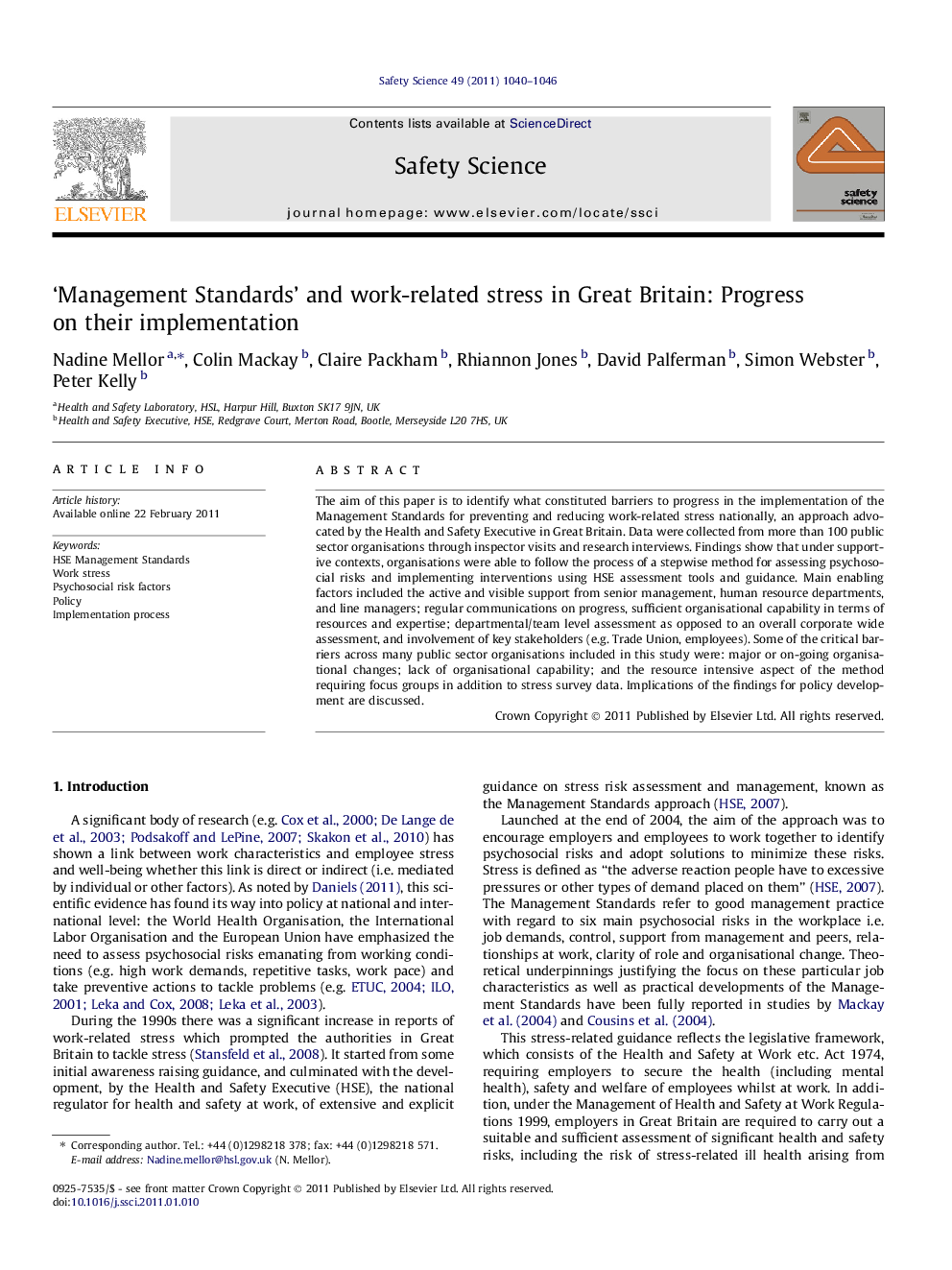| کد مقاله | کد نشریه | سال انتشار | مقاله انگلیسی | نسخه تمام متن |
|---|---|---|---|---|
| 589703 | 878715 | 2011 | 7 صفحه PDF | دانلود رایگان |

The aim of this paper is to identify what constituted barriers to progress in the implementation of the Management Standards for preventing and reducing work-related stress nationally, an approach advocated by the Health and Safety Executive in Great Britain. Data were collected from more than 100 public sector organisations through inspector visits and research interviews. Findings show that under supportive contexts, organisations were able to follow the process of a stepwise method for assessing psychosocial risks and implementing interventions using HSE assessment tools and guidance. Main enabling factors included the active and visible support from senior management, human resource departments, and line managers; regular communications on progress, sufficient organisational capability in terms of resources and expertise; departmental/team level assessment as opposed to an overall corporate wide assessment, and involvement of key stakeholders (e.g. Trade Union, employees). Some of the critical barriers across many public sector organisations included in this study were: major or on-going organisational changes; lack of organisational capability; and the resource intensive aspect of the method requiring focus groups in addition to stress survey data. Implications of the findings for policy development are discussed.
Research highlights
► Main barriers for reducing work-related stress in Great Britain are explored.
► Organizations are more likely to properly assess psychosocial risks under supportive contexts.
► Enabling factors include senior management as well as other key stakeholders involvement.
► A team assessment strategy as opposed to a corporate-wide one is easier to implement.
► Critical barriers include organizational changes and lack of organizational capability.
Journal: Safety Science - Volume 49, Issue 7, August 2011, Pages 1040–1046